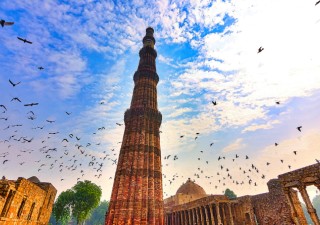Proving Your Trademark Case
15 May 2015

This article will highlight some practical do’s and do-not’s in a typical trademark litigation in India. The focus will be on peculiar points only and not on standard information and therefore, by no means, is this a comprehensive listing of things to do or avoid doing.
Affidavits
Practitioners are advised to always take a file inspection before recording evidence so that the documents that need to be exhibit marked can be identiied and lagged, saving several hours during evidence proceedings. This is particularly useful if there are foreign witnesses, as an over-low of a few hours may compel a second visit to India, causing great inconvenience, hardship and cost.
While preparing an afidavit of a witness, always get the witness to give his detailed comments on specific points so that the language of the witness can be preserved in the afidavit to the best extent possible. The advocates may give the afidavit a legal shape but should avoid re-writing the affidavit in their own language as far as possible.
The lawyer should provide the witness with a questionnaire or main themes on which questions are likely to be posed by the opposite party so that cross-examination can be prepared. It is not appropriate to interfere with the answers that a witness is likely to give as that would amount to coaching, although guidance as to how crossexamination is conducted and generally as to the procedure, is perfectly permissible.
If it is the plaintiff, then he must try and include a damages computation even though it is not a sophisticated computation as without one, Judges will ind it dificult to award damages or at best, will award punitive damages in the range of Rs100,000 to Rs300,00, i.e., less than US$5,000.
Always look carefully at the verification in the afidavit being prepared to ensure that there is a clear distinction between paragraphs which are veriied based on personal knowledge and those veriied on the basis of the records of the company. It is a good practice to compare the veriication of the said afidavit with the veriication of the plaint for paragraphs containing similar facts.
Witnesses
Try to keep witnesses as few as possible. Something like two or three is a good number as the greater the witnesses, the more the chances of contradiction as there is also an exponential increase in the time taken for the trial. Typically, one corporate witness to prove the case set out in the plaint generally including proving the institution of the law suit; a second witness, who in a trademark case would prove the goodwill and in the cases of foreign trademarks, international registrations, user and renown; while a third witness would concentrate on damages and other financials like sales turnover, advertising expenses, etc.
In a patent case, of course, there would be at least one independent expert giving evidence on the invention itself and the fact that it does not lack novelty nor is obvious. The expert could also give evidence on infringement.
If the case is ex-parte, then you should always seek an exemption from personal appearance of the foreign witness(s).
One witness should not read the evidence of another and while signing his afidavit, he must visit the Notary Public or the Oath Commissioner, as there is a tendency in India for busy corporate witnesses to avoid going to the Notary Public and signing in the lawyer’s ofice. That is a practice to be avoided at any cost.
If a witness becomes unavailable for any reason and an additional witness is to be brought in, then as far as possible, his afidavit should not replicate the one iled by the irst witness and should be in his own language although reading on the same facts.
In case of a foreign witness who cannot attend the hearing in person due to illness or otherwise, his evidence could also be recorded through a video conference. At the foreign end, there is no necessity of having a representative of the Indian High Commission as was the case in the past, but a Notary Public or sometimes even a wide-angle camera could serve the purpose to ensure that the witness is not being prompted in any manner.
Local Commission Proceedings
Local Commissioners are normally retired judges or senior oficers who have been appointed to record evidence. They are less busy than judges and can, therefore, give time in the early hours of the day, say 10:00 am, and go on for several hours only on the case at hand. They can even record evidence on a Saturday and help move forward the process rapidly.
On an average, a Local Commissioner gets a fee of about US$2,000, but if the number of dates are too many, there could be a proportional increase. In most cases, parties share the fees, but sometimes it is the plaintiff who pays with a direction that the costs of the Commission will be the cost in the suit.
While fixing the Local Commission, also ensure that the room where evidence is to be recorded is organized along with a stenographer, IT support etc. and the ile of the case summoned for a speciic day. If all the resources are not aligned, then the matter could be adjourned only because the ile has not arrived from the Registry of the High Court to the Local Commissioner.
First Channel Building
Plot No. 17 A, Sector 16 A
Film City, Noida 201301 (UP)
India
T: +91 120 4059300
F: +91 120 4243056 - 058
E: email@anandandanand.com






